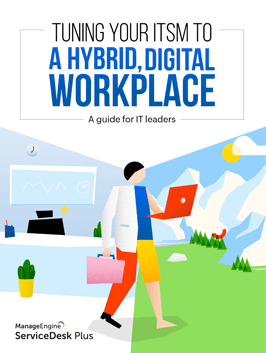In this final chapter of the change management guide, let's learn about 15 must-know change management terms to better understand the terminologies in IT change management
Glossary
Change:
The addition, modification, or removal of anything that can have a direct or indirect effect on services.
Change advisory board (CAB):
A team of various stakeholders who give recommendations about the change and approve the change plan.
Change collision:
When two or more changes are inadvertently planned to be implemented simultaneously, disrupting the implementation of either change.
Change management:
The process of taking changes to completion with minimal disruptions and collisions.
Change roles:
The delegation of responsibility over the various aspects of the change to different members of the organization.
Closure code:
Used to record the nature of the change closure, such as failed or successful.Used to record the nature of the change closure, such as failed or successful.
Configuration management database (CMDB):
A repository of all configuration items and their relationships.
Continual service improvement:
The process of identifying and fixing areas that can be improved to make services better.
Downtime:
The period of time when a particular service in not available.
Incident:
An unplanned interruption to an IT service, or a reduction in the quality of an IT service. Failure of a configuration item, even if it has not yet affected a service, is also an incident (e.g. failure of one disk from a mirror set).
Problem:
A cause or potential cause of one or more incidents.
Post-implementation review:
The process of evaluating whether the change plan was followed without deviations, as well as examining the implementation to see if anything needs to be changed.
Request for change (RFC):
The process of initiating a change with a valid reason.
Risk assessment:
The process of evaluating the potential risks involved with a change.
Service desk:
The point of communication between service providers and the organization's users.
This is the ninth and final part to the change management guide which covers the process of IT change management from start to closure, how your organization can stay on top of industry trends with effective changes, and more.
The previous sections of the guide can be accessed below:
- What is IT change management?
- Types of change management
- IT change management roles and responsibilities
- 4 key challenges of IT change management
- 10 IT change management best practices
- Change management vs release management vs CMDB
- Top 7 IT change management metrics and KPIs to measure
- Change management plan examples






